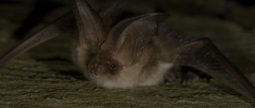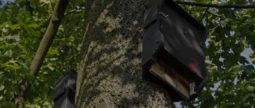What you need to know about your bat survey
Our team of expert bat surveyors are on hand to help you progress your project. We are pro-development, which means that we first and foremost want you to be able get on with your project as quickly and smoothly as possible. It is also very important to us that you receive a positive experience from your bat survey.
Bat surveys are usually requested by local planning authorities where there is a reasonable likelihood that the planning application may affect bats. Examples of projects that often require bat surveys include;
• Barn conversions
• Extensions
• Demolitions and rebuilds
• Repair works to old buildings, such as churches and manor houses
• Large developments with good habitats, such as hedgerow or trees
Bat surveys of buildings and structures are undertaken over stages.
Stage 1; usually starting with a bat scoping survey, which is a cheap initial assessment of the building or structure. The purpose of this survey is to identify whether bats are present or the building or structure has suitability for bats.
If no evidence of bats is found and the building or structure is not suitable for bats, then this is all that’s required.
Stage 2; if evidence of bats is found or if the building or structure is suitable for bats, then the next stage is to undertake bat activity (emergence) surveys between May and September. This is a straightforward survey undertaken at night that allows our surveyors to watch and record (using specialist equipment) if bats fly out of the building, providing clear evidence of whether bats are present or not. If no bats are recorded, then that’s all that required.
Stage 3; if bats are recorded exiting the building or structure then careful consideration will be required. Following discussions with you or your architect, we will assess whether the bats will be affected by the development.
If the development will damage or disturb where the bats are roosting, then you will need to get a bat licence to do the work. We will guide you through this process and make it as effortless as possible.
If the development can proceed without damaging or disturbing the areas where bats are roosting, then you can carry on with your work as long as you take some sensible precautions.
Tip: If you think you have bats or if your building/structure is old or rural then the best approach may be to skip the first stage and start with a bat activity (emergence) survey – this will ultimately save you time and money. Give us a call to discuss.
Bats: A brief life history
Bats are often misunderstood and are generally not portrayed in a very good light – this reputation is unfair as bats provide important benefits to the environment, particularly insect pests such as mosquitos, moths and other insects that can damage crops.
Bats are nocturnal animals that are active between dusk and dawn during the summer months, retiring to communal roosts during the day to rest. Bats roosts not only serve as a place of rest after foraging all night, they also provide a refuge for bats to hibernate over the winter, and a safe environment for them to breed and raise their young. Bats typically establish roosts close to a ready supply of food (insects) and water, but as the seasons change, they may move the roost to another site that is more suitable to their needs at that time of the year.
Current Status and Why Bats are Protected
Bats are protected because they have suffered significant declines over the last few decades due to changes in land-use, loss of roosts within buildings and fragmentation of habitat.
We are fortunate to have a wide variety of bat species in the United Kingdom (18 species in total), which are all legally protected. Under the current legislation it is illegal to deliberately disturb, capture, injure or kill bats. It is also illegal to damage or destroy a bat roost, or prevent bats from gaining access to their roost.
How One of Our Bat Surveys Works
In order to get local authority approval for any new development you will need to provide evidence that the proposed development will not pose a threat to bats either directly, or indirectly by threatening their roosting sites. To this end, you will need scientific evidence confirming the presence or absence of bats on your development site. As a licensed ecological consultancy we can verify this by sending one of our ecological experts to your site to conduct a scoping bat survey during the daytime, inspecting the interior and exterior of buildings, as well as any trees on site, for any evidence of bats or bat activity.
Should we find any evidence of bats or bat activity on your site or if the site is considered suitable for roosting bats, your local authority will likely request that a second bat inspection — or bat emergence survey — be undertaken. The bat emergence survey is seasonally limited to the summer months (1 May — 30 September), with inspections carried out at dawn and dusk — the time of peak activity at bat roosts, when bats are either returning to-or departing from their roosting sites.
Take a look at our information sheet for a step-b- step guide to how our surveys work.
What Happens if Bats are Present on your Site
During the bat emergence survey all emerging bats or bats returning to the roost are recorded. Their species are noted, together with their flight paths and time of entry/exit. A bat emergence survey will confirm the presence of bats and their numbers, as well as identify the species. It will also provide important information such as the type of bat roost, the entrance/exit points, and what mitigating action needs to be taken to ensure the proposed development meets legal compliance.
Mitigation may include doing the development work at a time of year when bats are absent to reduce disturbance. If however, the work will definitely damage or disturb where the bats are roosting then you may need to get a licence to do the work.






